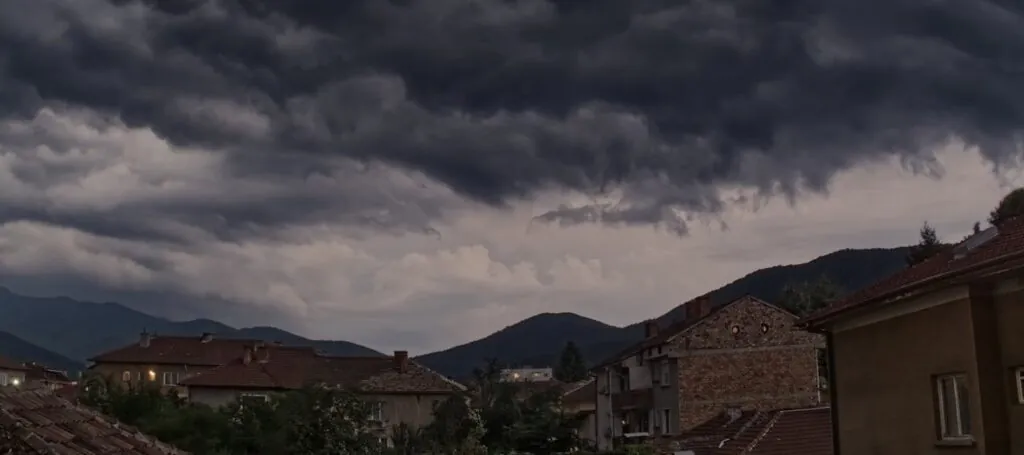Posted in:

Natural disasters, such as hurricanes, can devastate homes, but even milder weather, such as thunderstorms, can do severe damage. If you live in an area prone to extreme storms, prepping beforehand is crucial to minimizing harm. For the best outcome, follow our storm preparation checklist.
Prepare Early
It’s best to start preparations before the rainy season. That way, you won’t get caught off-guard. It’s also important to pay attention to the forecast and warnings issued by the weather service. Heavy rains may lead to flooding, which puts you and your property in danger.
If there’s a flood warning in your area, don’t risk traveling by car. Flash floods can wash vehicles away in the blink of an eye, and water can stall the engine, leaving you stranded.
Authorities may also issue evacuation instructions depending on the severity of the storm. Since the process can be chaotic, creating a plan in advance is essential. Know where to shelter during the storm and make accommodations as soon as possible. It’s also a good idea to choose a meeting place in case you and other members of your household get separated.
Whether you shelter in place or evacuate, you still need to prep your house for the incoming weather. The following steps can prevent excessive damage and help you recover once the clouds clear.
Check Your Insurance Policy
Most homeowners insurance policies cover storm damage, such as shattered windows. However, there are exceptions, the most notable being flood damage.
Very few policies cover flooding, even if it results from covered damage such as destroyed roofing. You’ll have to get separate flood insurance to adequately protect your residence.
Insurance policies also have coverage limits to protect insurers from excessive risk. As a result, you may need additional coverage for high-value items such as electronics, jewelry and artwork. Without these policies, you’ll have to pay replacement costs out of pocket.
It’s a good idea to review your insurance yearly to ensure you have enough coverage. Doing so at the beginning of the year also gives you enough time to update before hurricane season, which starts June 1 for New Jersey. The right homeowners insurance also pays for accommodations and extraneous expenses while you wait for repairs.
Create an Emergency Plan
The worst thing you can do with a storm approaching is to panic. Panic steals precious time and interferes with your judgment. Creating an emergency plan gives you clear instructions, decreasing your chance of panicking when it counts.
Step one should be creating your emergency kit. This kit contains essentials during power outages:
- Emergency phone charger
- Battery-powered radio
- Personal documents and cash in waterproof containers
- First aid supplies and prescription medications
- Toothbrushes, soap, clean clothes and other personal care items
Store this kit in an easily accessible place and make sure everyone in your household knows where it is. You should also have enough bottled water and non-perishable food for a few days. If you have the funds, invest in a generator in case the storm takes out power lines. Solar-powered generators are a great choice because they don’t require fuel; if your model requires fuel, have enough on hand for several days.
If sheltering in place, choose a room on the ground floor with the fewest windows. If flooding isn’t a risk, a basement or cellar can also work. Sheltering on a lower level decreases the chance of injury should your home collapse.
Once you have your plan, run a few drills. Practice everyone dropping what they’re doing and meeting in your chosen room. Assign someone to grab the emergency kit and a backup in case the first person isn’t home when the storm hits.
Think Long-Term
Before we get to storm-specific preparations, we want to highlight the importance of regular home maintenance. Yearly roof inspections and gutter cleaning can make a huge difference during a thunderstorm, as they ensure your house is secure against the elements. Minor issues you may not initially notice can become full-on disasters when you add torrential rains.
For instance, a tiny leak allows gallons of water to pour into your home during a tropical storm. Clogged gutter systems won’t allow water to pass freely, leading to puddles on the rooftop. In the aftermath, these puddles can degrade shingles, create an environment for mold growth and absorb into wooden structures, causing them to swell. Repairing the resulting damage will be more expensive than a simple maintenance appointment.
It’s also crucial to keep up with structural maintenance. Weakened walls and load-bearing beams make homes more likely to collapse under pressure, putting you at risk. Keep an eye out for wildlife, termites, water damage, and other concerns and address them as soon as possible.
Get Your Home Ready
As storm season nears, you can take temporary measures to safeguard your property. If you have trees or bushes, trim them to reduce the risk of flying debris. This step is especially important if you have diseased or dead trees, as they’re more likely to get uprooted by high winds. Plywood and storm shutters can also protect doors and windows.
Move all outdoor furniture indoors to prevent it from getting blown away. Even small objects, such as hanging plants and windchimes, can cause damage when flung at high speeds. A storage shed or garage should do just fine. A basement can also serve as temporary storage as long as you have a sump pump and a generator to power it, as basements are at a high risk of flooding.
If you can’t move an outdoor item, tie it down. For instance, if you don’t have room for a patio table inside your house, you can secure it with bungee cords. These have enough flexibility to prevent snapping under pressure and enough strength to keep heavy items in place. It’s also a good idea to cover furniture with a tarp to protect it from water and dirt.
Double-check your carbon monoxide and smoke detectors. Additionally, only use grills and charcoal burners outside, as they can cause fires and carbon monoxide poisoning.
Repair After
In the aftermath of a storm, you’ll probably need to repair your home’s exterior. Fortunately, Cherry Roofing and Siding can help. To learn more about our services, contact us today.
May 28, 2024





